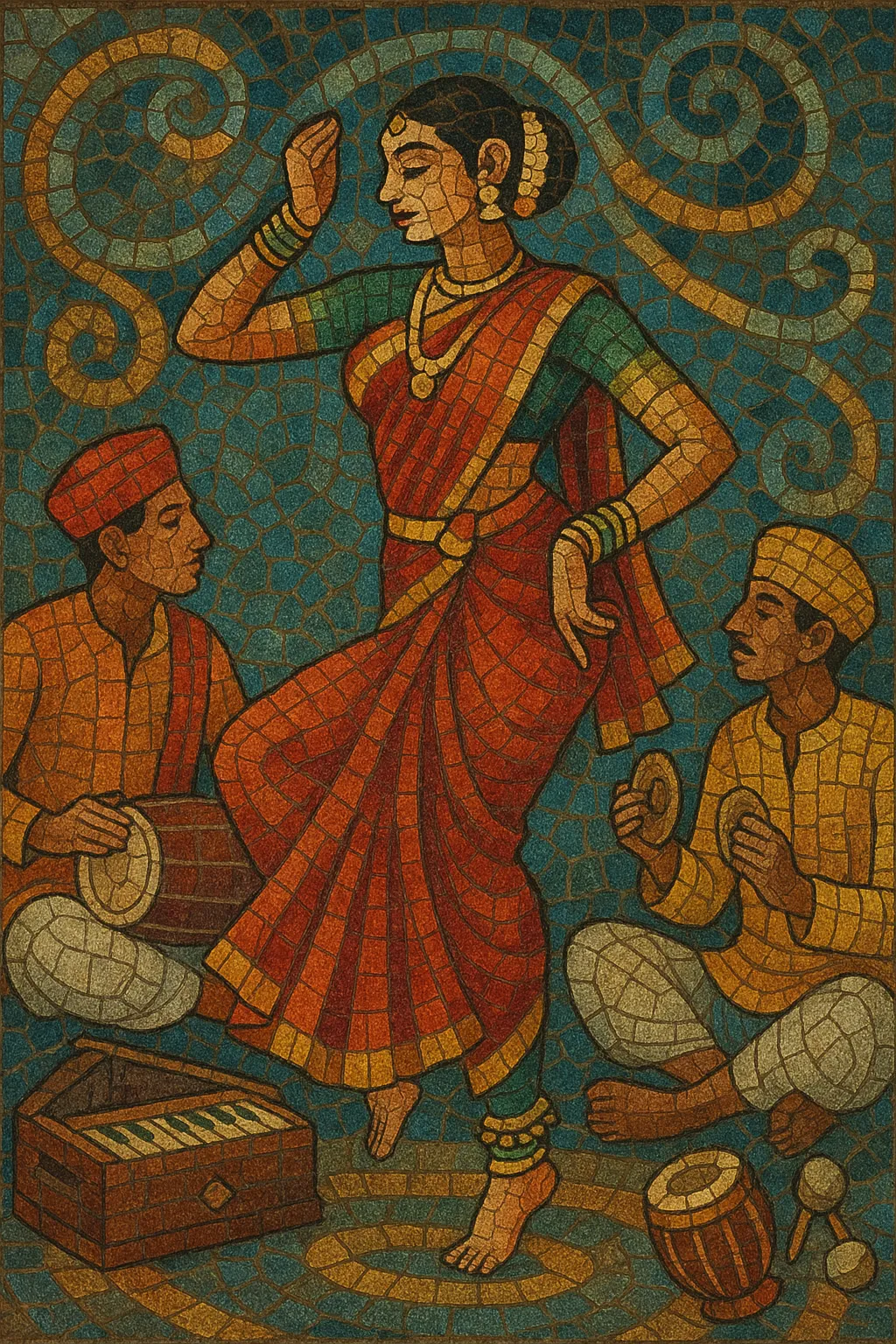Lavani is a high-energy folk music-and-dance tradition from Maharashtra, India, known for its brisk dholki-driven rhythms, expressive singing, and sensuous, theatrical performance style. Typically performed in Marathi, it blends light-classical melodic ideas with earthy folk poetics, witty repartee, and crowd-pleasing dance.
Lavani songs are commonly featured within Tamasha theatre troupes and are recognized by their fast tempo, call-and-response refrains, and striking stagecraft. Performers usually wear the nine-yard nauvari sari and ankle bells (ghunghroo), with a small ensemble of dholki, harmonium, and hand cymbals (manjeera) providing the musical bed. Two principal strands exist: the shringari (romantic/erotic) lavani that foregrounds flirtation and play, and the nirguni (philosophical/devotional) lavani that draws on Bhakti themes and moral reflection.
Lavani’s roots lie in the folk and courtly cultures of the Deccan, with antecedents in Marathi folk song and devotional currents of the Bhakti movement. While its early forms trace back to the late 17th century, Lavani crystallized as a recognizable musical-dramatic genre during the 18th century.
Lavani flourished under the Maratha Peshwas in the 1700s, finding a natural home in Tamasha—Maharashtra’s popular musical theatre. Troupes traveled between towns, and Lavani pieces became centerpieces of these shows: fast, witty, and visceral, with dholki grooves, suggestive wordplay, and charismatic lead performers engaging directly with audiences.
Musically, Lavani took on light-classical hues from Hindustani practice while remaining grounded in folk melody and rhythm. The performance fused song, dance, and drama; singers and dancers shared the spotlight, and choruses often echoed punch lines or refrains. Two streams emerged: shringari lavani, emphasizing romance and sensuality; and nirguni lavani, drawing on non-dual/devotional ideas and moral themes.
In the 20th century, Lavani’s stage tradition fed into recorded music and regional cinema. Playback singers popularized Lavani numbers, and its rhythmic and theatrical imprint appeared in Marathi films and, occasionally, in Hindi film song-and-dance sequences.
Today, Lavani continues to thrive in live Tamasha and concert formats, while also undergoing reinvention on television and digital platforms. Ongoing conversations address the balance between preserving tradition, respecting performers, and adapting aesthetics for modern audiences.


